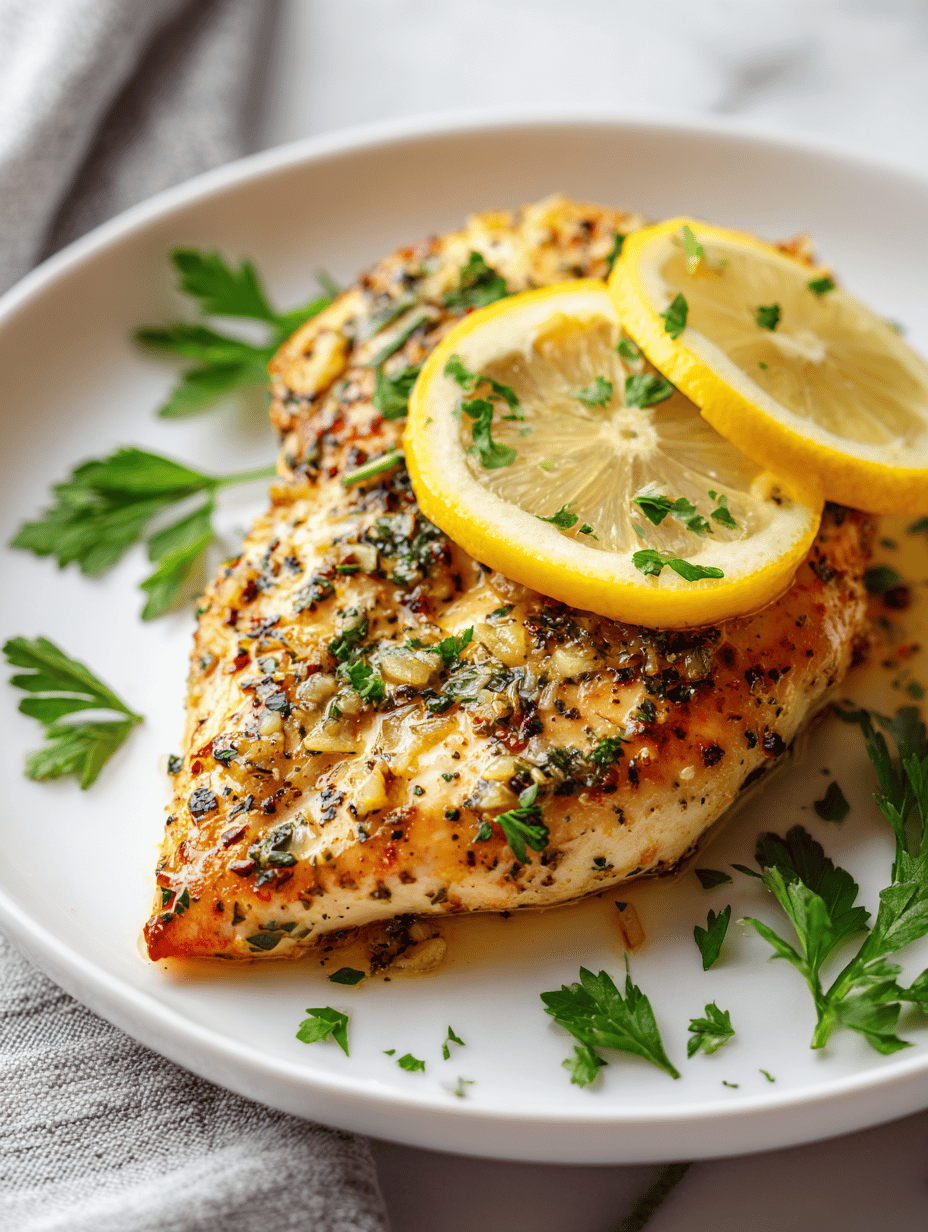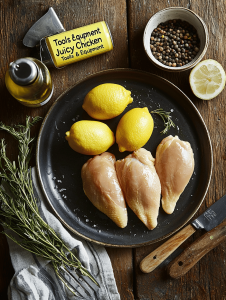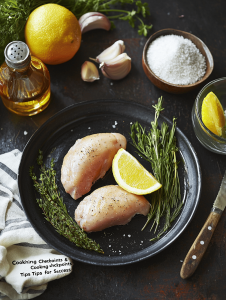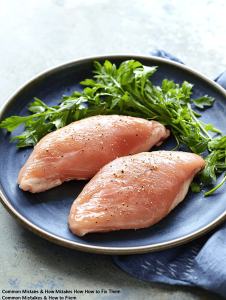Chicken breasts can be so boring if you stick to the same old grilled or baked routine. I like to think of them as a blank canvas—an opportunity to layer in bold flavors and textures. This recipe is about pushing that boundary with a quick marinade and a hot sear that caramelizes the surface, locking in juiciness.
Why I Keep Coming Back to This Recipe
It’s simple enough for a weekday, yet feels special. The way the lemon and garlic meld into the smoky crust—each bite is a little burst of comfort and brightness. Plus, it’s forgiving, flexible, and always turns out juicy when I follow these steps. That moment when I slice into it and the juices glisten—nothing beats that.
Breaking Down the Ingredients
- Chicken breast: Lean, tender, a blank slate for flavors—choose fresh, organic if possible.
- Lemon juice: Brightens and tenderizes—swap with lime for a different citrus punch.
- Garlic: Adds smoky, pungent notes—roast slightly for a sweeter depth.
- Smoked paprika: Gives a subtle smoky earthiness—use regular paprika if you’re out.
- Olive oil: Helps sear evenly—go for good-quality extra virgin for richer flavor.
- Salt & pepper: Fundamental seasoning—adjust to your taste, don’t skip.
- Optional herbs (thyme, rosemary): Fresh herbs elevate the aroma—add at the marinade stage or garnish.
Tools & Equipment for Juicy Chicken
- Cast-iron skillet: Provides even heat and great sear, essential for that crispy crust.
- Meat thermometer: Ensures precise doneness without overcooking.
- Tongs: Turns the chicken gently and evenly.
- Aluminum foil: Rest the meat and keep it warm.
Step-by-Step Guide to Perfectly Juicy, Flavorful Chicken Breast
Step 1: Start with a fresh, organic chicken breast; the quality makes all the difference in tenderness.
Step 2: Marinate it in a mixture of lemon juice, garlic, and a dash of smoked paprika for at least 30 minutes.
Step 3: Heat a cast-iron skillet over medium-high heat until it’s just starting to shimmer, about 2 minutes.
Step 4: Sear the chicken for 4-5 minutes per side, until a deep golden crust forms and it releases easily from the pan.
Step 5: Use a meat thermometer to check for 75°C (165°F) in the thickest part of the breast.
Step 6: Let it rest for 5 minutes off the heat, loosely tented with foil, to lock in juices.
Step 7: Slice against the grain and serve with a drizzle of the pan juices for maximum flavor.
Cooking Checkpoints & Tips for Success
- Look for a rich, golden crust forming before flipping.
- Use a thermometer, don’t guess—75°C (165°F) is the safe, juicy zone.
- The chicken should jiggle slightly in the center when done; avoid overcooking.
- Rest the meat properly to keep it moist and flavorful.
Common Mistakes & How to Fix Them
- Cooking without checking internal temperature.? Use a meat thermometer instead of guessing; avoid rubbery or dry results.
- Crowding causing the chicken to stew instead of sear.? Don’t overcrowd the pan; cook in batches if needed to avoid steaming.
- Cutting into it immediately, losing juices.? Let the chicken rest for at least 5 minutes.
- Searing at too low a temperature, resulting in pale, soggy crust.? Ensure your pan is hot before adding the chicken.

Garlic Lemon Chicken Breast
Ingredients
Equipment
Method
- Place the chicken breasts in a shallow dish and pour over the lemon juice, minced garlic, smoked paprika, and a drizzle of olive oil. Season with salt and pepper, then toss to coat evenly. Let marinate for at least 30 minutes to infuse flavor and tenderize.

- Heat the cast-iron skillet over medium-high heat until it shimmers and you can hear a gentle sizzle. Add a splash of olive oil and swirl to coat the pan evenly.

- Remove the chicken from the marinade, letting excess drip off, and carefully place it into the hot skillet. Sear for about 4-5 minutes without moving, until the surface develops a deep golden crust and releases easily from the pan.

- Flip the chicken using tongs and cook for another 4-5 minutes, maintaining a steady sizzle. The crust should be crispy and deep golden, with the chicken feeling firm yet slightly springy when pressed.

- Insert a meat thermometer into the thickest part of a breast to check for 75°C (165°F). Once reached, remove the chicken from the skillet and transfer to a plate.

- Tent the chicken loosely with aluminum foil and let it rest for 5 minutes. This step allows the juices to redistribute, keeping the meat moist and flavorful.
- Slice the chicken against the grain into thick strips or rounds, and arrange on a plate. Drizzle with any pan juices and garnish with fresh herbs if desired for a bright, aromatic finish.
Leave a Reply